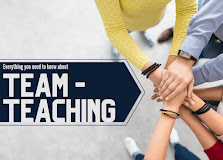A productive teaching team can help create an effective learning environment by providing the student with innovative and distinct experiences through the collaborative and creative context.
Any team-teaching project's level of success will depend on the participants themselves, both from a professional and personal standpoint, as well as the chemistry of their relationship. The value of each member's unique personality and life experiences is noted by Bakken, Clark, and Thompson: "We felt that we were mature enough to compromise, secure enough to share power, wise enough not to take things too seriously and to find humor in most situations, confident enough to try new strategies, and professional enough to seek feedback to make improvements" (Bakken, Clark and Thompson, 1998).
Being committed to team teaching necessitates being prepared to collaborate closely with another professional and having the self-awareness to be open and truthful about one's own traits and qualities. It is crucial to have the essential generic skills of interpersonal and communication, flexibility and adaptation, as well as problem-solving, decision-making, and evaluation abilities (Cook and Friend, 1995). Honesty and humor are the essential ingredients, as advised by Melba Smithwick: “Lay all the cards on the table, don’t speak with hidden messages, be direct, honest, kind, professional, friendly, and – for goodness sakes – keep a positive attitude and a good sense of humor” (Cromwell, 2005).
It is thought that a collaborative working environment,
supported by shared teaching philosophies and a strong professional and
personal relationship, can be regarded as an important representation of the
five guidelines for effective teaching collaboration presented by Bennett,
Ishler, and O'Loughlin (1992): the presence of a genuinely equal relationship;
the equal importance of different knowledge bases; the mutual commitment to engaging
in ongoing dialogue and inquiry; We believe the ultimate winners are the
students who want to carry on the discussion we started during class. Our own
discourse has been extensive and interesting, offering a high level of
professional satisfaction and advancement.
References:
Bennett, R. V., Ishler, M. F. & O’Loughlin, M. (1992). Effective collabo-ration in teacher education. Action in Teacher Education, 14 (1), 52-6.
Bakken, L, Clark, F. L, & Thompson, J. (1998). Collaborative teaching: many joys, some surprises, and a few worms. College Teaching, 46 (4), 154-157.
Cook, L. & Friend, M. (1995). Co-teaching: Guidelines for creating effective practices. Focus on Exceptional Children, 28(3), 1-15.
Cromwell, S. (2005). Team teaching: teaming teachers offer tips. Educa-tion World. Retrieved March 2, 2006, from http://www.educationworld.com/a_admin/admin/admin290.shtml

Comments
Post a Comment